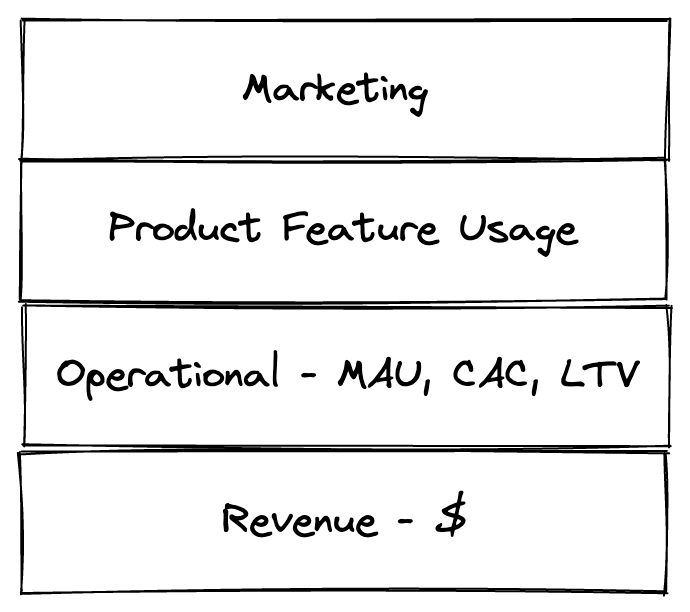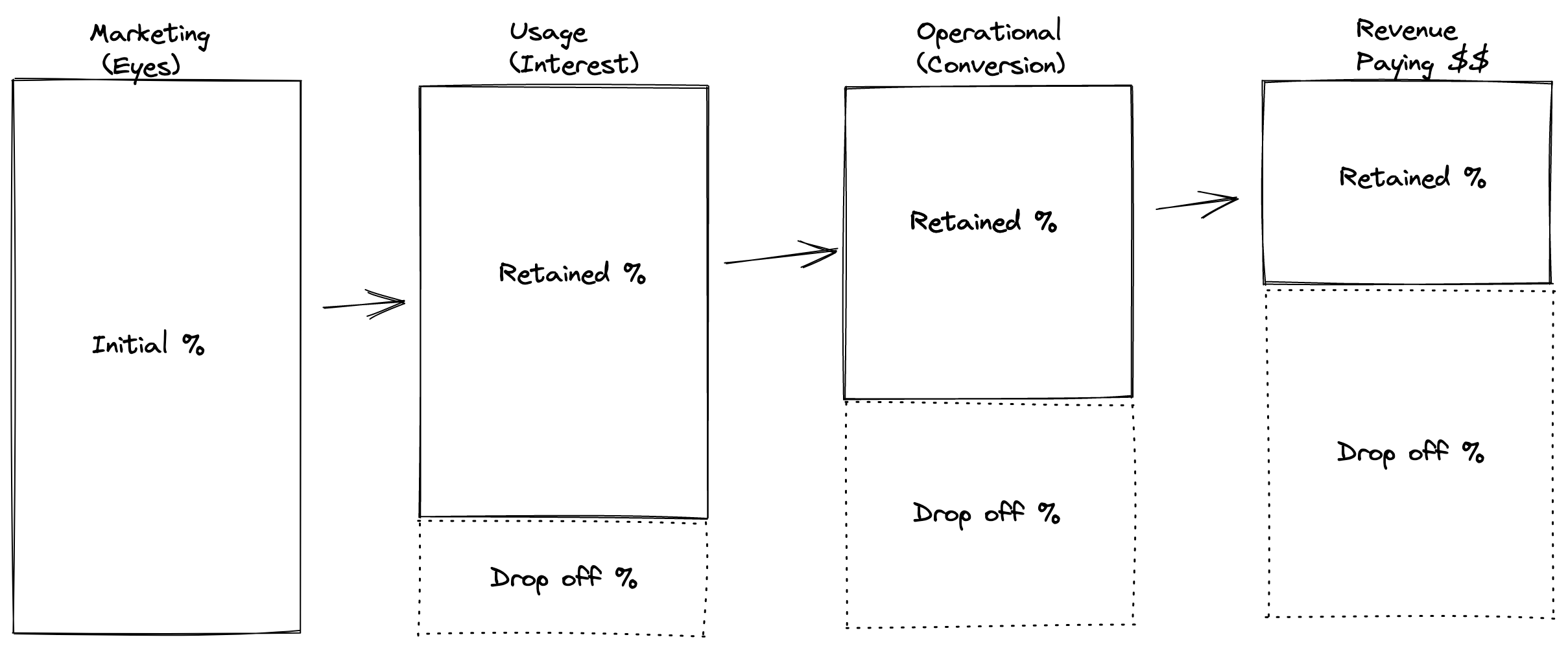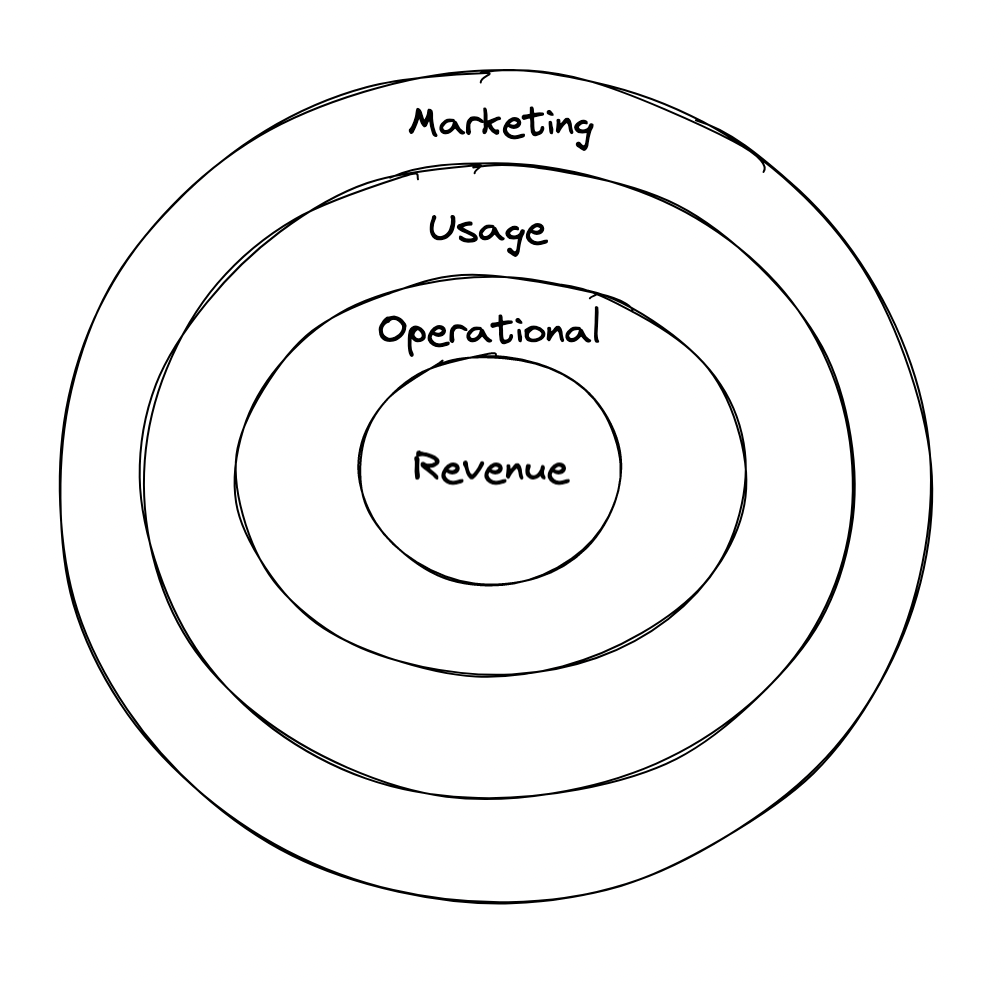- Published on
Business Analytics - Measuring What Matters Most
- Authors

- Name
- Danny Mican
It's easy to fall into an analytics track of capturing what's easy to track instead of what's important. Most business begin by focusing on user actions like page views over business outcomes, such as revenue. Revenue is the best proxy for success in for-profit businesses, and should be one of the first candidates for analytical measurements.
For Profit-Business
The ultimate goal of a for-profit business is to generate a profit. Remember that profit is calculated as revenue Revenue - Expenses. Business needs to provide a genuinely valuable offering to consistently generate revenue.
It's not possible to fake genuine value, and revenue is a proxy for that value. If people find your product valuable they will pay for it. If they don't, they will not pay for it.
Revenue as the Foundation for Business Analytics
Starting an analytics journey by measuring revenue allows a company to tell their story from the bottom up. Revenue is the outcome of all business activities and provides a proxy for the value that a product offers customers. Revenue is the life blood of a company and all other actions and marketing support it.
The goal of a for profit company is to eventually generate revenue. Revenue is the foundation, that all other analytics lead to:

Flipping this diagram illustrates another common way to understand acquisition, where revenue exists at the end of the acquisition Funnel. Potential or current users encounter your product, something about your brand stirs their interesting, they eventually convert, and hopefully they end up paying you as testament to your product providing them with some value!

Revenue is the First Stage in Analytical Maturity for Businesses
Another thing to consider is where you are in your analytical journey. Descriptive analytics (documenting actions that happened) are widely considered the first stage in analytical maturity.
Descriptive analytics focuses on measuring events that have happened. This stage is historic looking, and is the easiest to achieve because it mainly involves recording and reporting. The reason that revenue is often the best candidate to start with, is because it is captured as a by-product of doing business. Businesses must capture revenue, because they are required to report on it for taxes. Revenue may be captured in tools like:
- Invoice management, such as Quickbooks
- Payment Solutions, such as Stripe, Square, or Paypal
- Contract / Sales, such as Salesforce
This makes collecting and reporting on revenue data easier, and more accessible, than ever.
Like everything, there are always exceptions; while revenue is the most important business outcome for a for-profit company, it may not make sense at super early stage companies, those that are pre-product market fit. In pre-product market fit companies, engagement, or views may make more sense to start with.
Layers in the Onion
Revenue is not the end-all-be-all of business analytics, but one layer (the most important) in understanding the health of a business. Each of the other analytical domains are required to truly understand business performance, with revenue existing at the core:

Each layer in the onion represents an important part of business analytics:
- Marketing: Impressions, CTR
- Usage: Engagements, Product Usage
- Operations: Accounts, MAU, Product analytics like customer purchases, Cart sizes, add-ons, etc
- Revenue: LTV, $$$, Average Spend
Approach
Beginning your data journey by focusing on revenue has never been easier:
Consider your stage
As mentioned, if your company is pre-product market fit, it may make sense to start with more traditional engagement, and usage metrics. If the business is not yet generating revenue, there's no point in starting with collecting revenue. If your company is generating revenue, then it's critically important to understand that generation.
Start With Centralized
It may be tempting to start building reporting off of your current solution, but this greatly inhibits ability to enhance analytics as you progress in the analytic maturity model. The current data warehouse ecosystem makes it easier and more cost effective than ever to start with data warehousing from the beginning. Starting with a centralized solution is easy, cost effective and more flexible than starting with vendor specific analytics.
A centralized solution enables additional context as subsequent layers of analytics are added on. LTV data, or product data can be added to the centralized database to help you better drill down and understand revenue generation. Eventually, marketing and product usage data can be layered in, to provide even more business context.
Buy Don't Build
The era of building data analytical pipelines from scratch are over. Off the shelf solutions enable data aquisition, modeling and loading in a cost effective way. Fivetran, supermetrics, airbyte, dataddo, powermyanalytics, etc can all transfer data from your various vendors into a centralized data warehouse. The total cost of ownership for these solutions significantly outperforms in-house data engineering.
It's never been easier to build out incredible analytical business insights but careful attention needs to be paid to analytical initiatives. It's easy to fall into the data trap of building out data and analytic technology without a clear business purpose, and then trying to find a fit for these technologies.
Understanding revenue is almost always a good investment in a for-profit company.